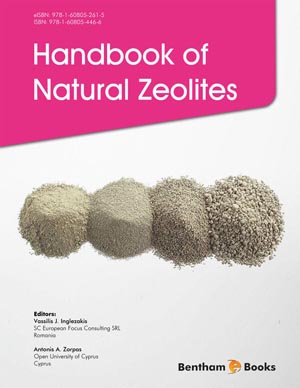Abstract
Zeolites have been recognized for more than 200 years, but only during the middle of the 20th century have attracted the attention of scientists and engineers who demonstrated their technological importance in several fields. Although most of the effort was devoted to synthetic zeolites, in recent years increasing attention has been directed towards natural zeolites, whose status changed from that of museum curiosity to an important mineral commodity. Natural zeolites forming the corresponding group of tectosilicate mineral subclass, due to their specific crystal chemical characteristics providing the unique ion exchange and molecular sieve properties, are known as effective adsorbents and catalysts. The zeolites are highly rigid under dehydration as well as under various aggressive surroundings actions. The molecular sieving and other physico-chemical properties of the zeolites can be managed by the thermal or chemical treatment. Such features provide the effective and wide utilization of these materials in industry, agriculture, medicine, environmental protection and other fields. Synthesized analogues of the natural zeolites are usually applied in different technological processes, and the low output price conditioned by a subsurface location of massive deposits of natural zeolites throughout the world make them significantly more available for a wide utilization. Main fields of industrially important zeolite rocks are presented by clinoptilolite (or mordenite, chabazite, phillipsite, etc.) tuffs and are connected with volcanic formations.
Keywords: Natural zeolites, volcanic tuffs, clinoptilolite (natural) zeolite, ion exchange, dealumination, physical (thermal) activation, thermal activation, chemical treatments, biological treatments, catalytic applications, catalytic processes, adsorption process, heterogeneous catalysis, mineral acids, C-C bonds, acetaldehyde, formaldehyde, aldol condensation, acrolein, crotonaldehyde.












